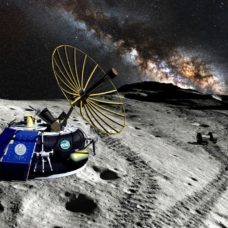A new MIT study is reviewing the feasibility of installing a powerful space laser to guide extraterrestrials to Earth.
After almost a decade, during which it discovered thousands of confirmed exoplanets, NASA’s Kepler telescope was permanently shut down this month.
After revolutionizing our ideas of life, the universe, and everything, Kepler now passes the planet-hunting torch to the TESS telescope.
The Universe is teeming with innumerable worlds, and many of them are potentially habitable. Even moons can have the conditions to harbor life. This includes Earth’s own moon which may have witnessed two separate habitable periods of its own.
Despite these efforts, we have yet to detect the faintest evidence of life, let alone of extraterrestrial intelligence, and not for lack of trying.
Today, we are trying to find alien life to the best of our understanding and resources. However, our understanding is no doubt incomplete, and our financial and scientific resources are limited.
Read More: Researchers are Using Asteroid Impacts to Search for Alien Life
If We Can’t Find Aliens, Let’s Help Them Find Us
Who knows. There might be alien astronomers somewhere doing their best at trying to detect “alien” life signals, just like our scientists.
Or, maybe they have sent explorer spacecraft and probes around the cosmos in hopes of finding life elsewhere than on their homeworld.
To increase the odds of success to their attempts at finding us, James R. Clark a graduate student in MIT’s Department of Aeronautics and Astronautics, suggests installing a powerful space laser as a cosmic beacon that points back to Earth.
According to a feasibility study, if “a high-powered 1- to 2-megawatt laser were focused through a massive 30- to 45-meter telescope and aimed out into space, the combination would produce a beam of infrared radiation strong enough to stand out from the sun’s energy.”
This planetary-scale porch light would be powerful enough to reach as far as 20,000 light-years away to make our presence known to whoever is looking.
Hopefully, the space laser beacon could then attract alien astronomers in our cosmic neighborhood.
The same space laser system could be used to communicate with aliens via Morse code-like pulses.
“If we were to successfully close a handshake and start to communicate, we could flash a message, at a data rate of about a few hundred bits per second, which would get there in just a few years,” says Clark.
According to Clark, a mountaintop is the best place for the laser beacon to penetrate the Earth’s atmosphere faster. But, for safety issues, the far side of the moon would be the ideal place.
This project “would be a challenging project but not an impossible one,” especially since existing technologies could easily build such a system.
Been There Done That (Sort of)
As Clark puts it “this was a feasibility study. Whether or not this is a good idea, that’s a discussion for future work.”
However, it could also be a discussion around past projects.
As far-fetched as it may sound, helping extraterrestrials find our home planet isn’t a new idea.
The deeper we delved into space, the more aware we became of our limitations.
It was only in 2012 that first man-made device, Voyager 1, left our solar system.
It will take the twin spacecraft, Voyager 1 and Voyager 2, about 40,000 years to cross two light years just to get to the first star in their journey, Proxima Centauri. But the Voyager Interstellar Mission will end much sooner, around 2020.
On the cover of the Voyager Golden Record, which contained sounds and visuals of Earth, there’s a map that’s cleverly-designed so that intelligent alien species can easily locate Earth in the galaxy.
It’s been over forty years since the Voyager message left Earth, and we have yet to hear back from aliens.
Maybe no one has come upon it. Maybe they found it and deciphered the message and didn’t find us interesting enough to call us back. Or maybe the method itself used to design the map is flawed.
Will the laser beacon, if ever built, be any more successful? Only time will tell.



















Comments (0)
Most Recent